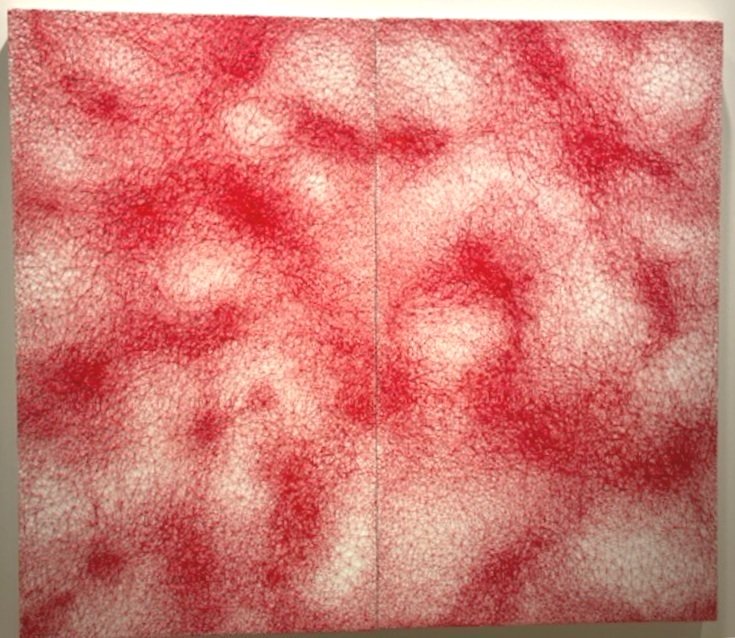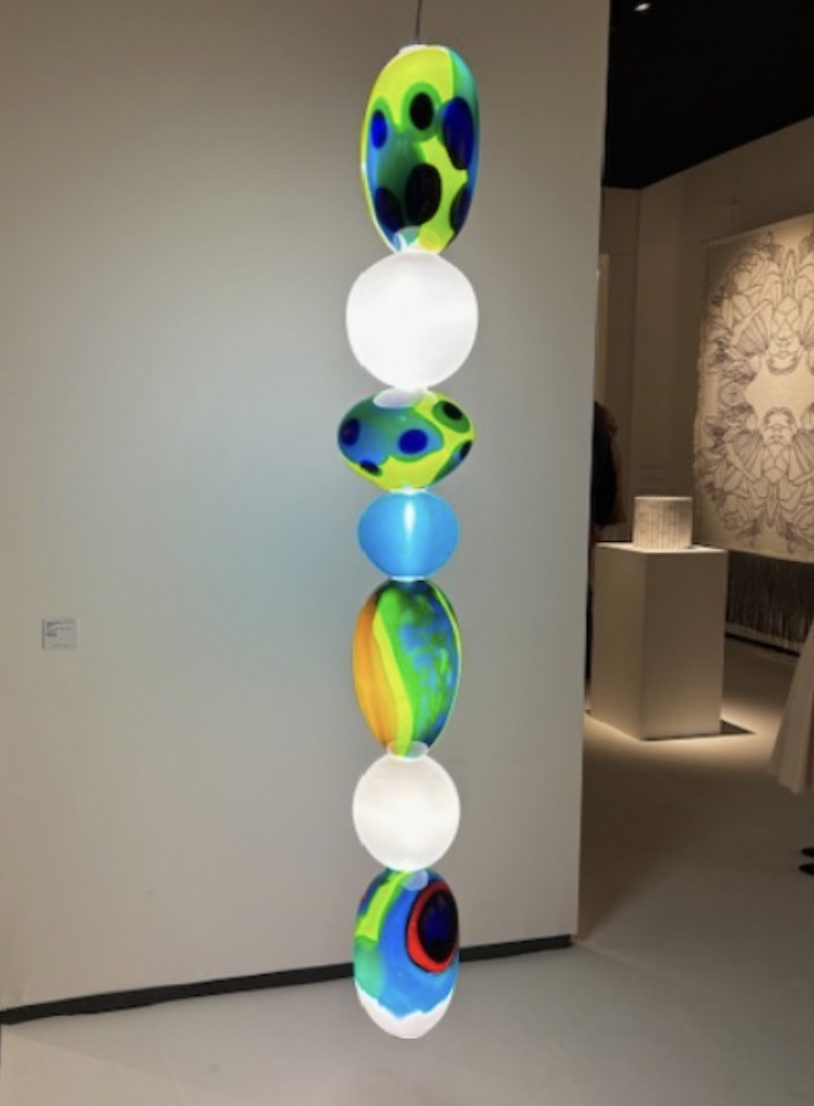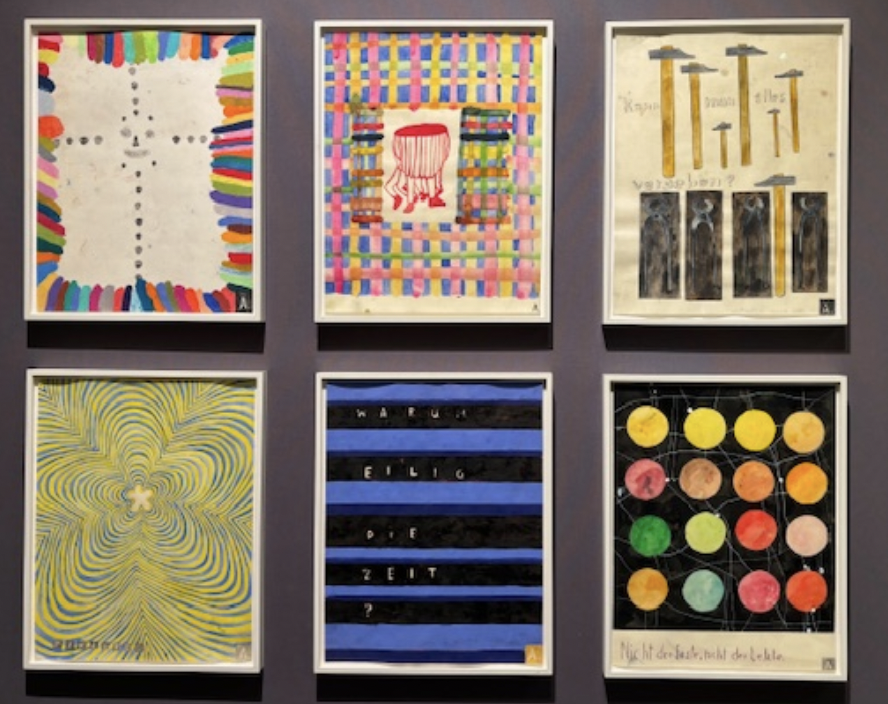OLD MASTERS GET A NEW GROOVE
MARCH 2024
Every March since 1988 the European Fine Art Foundation (TEFAF) has put on a fair in the small Dutch city of Maastricht, which is best known as the birthplace of the European Union. “Maastricht”, as art-world insiders call it, is one of the most important fairs for classical paintings and works of art. The eight-day fair, from March 7 - 14, probably boasts the largest concentration of museum curators on the hunt for their next acquisition. Among this year’s 50,000 visitors were some 300 museum directors and 650 curators. It is the premier destination for "old" art, designed to attract and engage prospective collectors, guiding them towards connoisseurship. This year’s event felt particularly buzzy, with a new generation of collectors (inspired, no doubt, by the blockbuster Vermeer exhibition at Amsterdam’s Rijksmuseum in 2023), flocking to Holland to see works by the Old Masters. Even though the fair is best known for artwork and antiquities from ancient Egypt to the early 20th-century, the number of contemporary dealers in attendance has been growing—it is an opportunity for them to tap into a new collector base as well as place contemporary works in dialogue with historical pieces.
Our European scout checked out the fair and highlighted some choice picks below ....
CHIHARU SHIOTA
Chiharu Shiota is known for her site-specific installations in which she weaves enormous webs from black, white, or red yarn and turns entire galleries into labyrinth environments. The woven threads create dreamlike scenes that explore and question the idea of the “web” as living organisms, similar to the structures that make up the universe or the neurons our brains are built on. Her inspiration often emerges from a personal experience or emotion, which she expands into universal human concerns such as life, death and relationships. She explores this sensation of a "presence in the absence" with her installations, but also presents intangible emotions in her sculptures, drawings, performance videos, photographs and canvases. Shiota’s artistic approach plays with the notions of temporality, movement, and dreams while demanding a dual engagement from the viewer, both physical and emotional.
Shiota was born in 1972 in Osaka, Japan, but is currently based in Berlin. Her university career spans several years; she studied at the Kyoto Seika University in Kyoto from 1992 to 1996, was an exchange student at Canberra School of Art, and practiced at Hochschule für Bildende Künste, Braunschweig, from 1997 to 1999. Finally, she finished her schooling at Universität der Künste, Berlin, in 2003. Chiharu Shiota’s work has been exhibited worldwide, including at the Hammer Museum in Los Angeles, CA; the Gallery of Modern Art in Brisbane; and the Japanese Pavilion at Biennale di Venezia.
LAURENT GRASSO
Laurent Grasso has developed a fascination with the visual possibilities related to the science of electromagnetic energy, radio waves and naturally occurring phenomena. Grasso explores these sciences as they apply to paranormal activity, a favorite subject of 18th-century scientists and philosophers, often used as parlor entertainment during the Victorian era.
Grasso works in video, sculpture, painting, and drawing to recreate phenomena – both human and natural – that set up surreal and ambiguous juxtapositions of time and space. He often intentionally manipulates imagery by imposing unique and unusual perspectives onto his subject matter, subverting the viewer’s instinct to accept what they see at face value. In Panoptes, seen above, a branch, from which a multitude of eyes blossom, brings to mind the figure of Saint Lucy and the depiction of her by the Quattrocento painter Francesco del Cossa.
Laurent Grasso lives and works in Paris, France. He received the Meru Art*Science Award in Bergamo, Italy, the Chevalier de l’ordre des Arts et des Lettres, and the Marcel Duchamp Prize. His work has been the subject of solo exhibitions at international institutions, including the Hermès Foundation, Tokyo, Japan; the Musée de l’hospice Saint-Roch, Issoudun, France; Kunsthaus Baselland, Muttenz, Switzerland; the Musée d’Art Contemporain, Montréal, Canada; Jeu de Paume, Paris, France; the Bass Museum of Art, Miami, Florida; the Hirshhorn Museum and Sculpture Garden, Washington D.C., and Palais de Tokyo, Paris, France.
SHAHZIA SIKANDER
Shahzia Sikander is widely celebrated for subverting Central and South-Asian manuscript painting traditions and launching the form known today as neo-miniature. Her breakthrough work, The Scroll, 1989–90, received national critical acclaim in Pakistan and brought international recognition to this medium within contemporary art practices in the 1990s. Sikander’s practice, which includes mosaics, paintings, media work, and most recently, sculpture, has been pivotal in showcasing the art of the South Asian diaspora as a contemporary American tradition. She introduces postcolonial and feminist perspectives into rigorous compositions that feature scenes and abstractions related to trade, migration, and imperial histories.
Shahzia Sikander was born in Lahore, Pakistan, in 1969. She earned a B.F.A. in 1991 from the National College of Arts (NCA) in Lahore. Sikander later moved to the United States to pursue an M.F.A. at the Rhode Island School of Design from 1993 to 1995. Recently, Sikander created a major outdoor project, an 8-foot bronze female sculpture, that appeared on the roof of the Appellate Courthouse in Manhattan. An accompanying 18-foot female sculpture was exhibited in Madison Square Park in 2023 and will travel to the University of Houston in 2024. A survey exhibition of Sikander’s work will be organized in 2024 by the Cleveland Museum of Art and Cincinnati Art Museum.
BEN SLEDSENS
Soothing and folkloric, Ben Sledsens’ paintings seem to exist as their own slices of paradise. He quickly became known for his large-scale figurative works set in nature or filled with woodland motifs. His work offers a glimpse into his imaginary world, a utopia in which he wants to live himself. His carefully constructed compositions and their vibrant color palette open up to the viewer's eyes and invite them to explore the unexplored world of his imagination.
Sledsens attaches great importance to the power of color to evoke moods in the viewer, resulting in a visual journey of discovery that can evoke different emotions, memories and stories in each spectator. Nature is a central theme within Ben Sledsens' oeuvre, but his landscapes are always composed from his own imagination and not painted from reality. However, many of his paintings feature depictions of his partner, the fashion designer Charlotte De Geyter, who appears wearing her own designs.
Ben Sledsens trained at the Royal Academy of Fine Arts, Antwerp and draws on the visual language of Henri Rousseau, Henri Matisse, and Pierre Bonnard. His work can be found in several international collections, including the Museum of Contemporary Art San Diego; CAC (Malaga); Fundacion Canaria para el Desarollo de la Pintura (Las Palmas De Gran Canaria); the Hermitage (St. Petersburg); and Nassima Landau Art Foundation (Tel Aviv). Sledsens lives and works in Antwerp, Belgium.
CAMILLA MOBERG
Camilla Moberg’s works are made of mouth-blown glass, revealing the unique character of each element. The light sculptures in her family of works, Messengers in Glass, featured here, are inspired by rock formations, animal populations, and biodiversity. This work contains unique patterns drawn from the motifs and colors found on jewel beetles, known for their brilliant coloration and iridescent glossy wings. By transposing and enlarging the patterns inspired by these jewel beetles into abstract glass formations, Moberg reveals their otherworldly beauty and opens a dialogue on the increasing loss of endangered animal populations.
Moberg began her career focusing on ceramics, but after graduating from the University of Art and Design in Helsinki in 1992, she quickly turned to glass, a material that dazzled her with its colors and shaping possibilities. Camilla Moberg now works and lives in Finland and has participated in many international exhibitions. Moberg’s light sculptures can be found in numerous public collections worldwide, including The Finnish Art Museum, Riihimäki, Finland; the State Art Collection, Finland; the Stedelijk Museum, Amsterdam, Holland; and the Art Center White Block, Seoul, Korea, among others.
MARTIN ASSIG
Martin Assig is internationally lauded for vibrant abstract paintings and works on paper that contemplate contemporary life through a kaleidoscope of sources and materials. He is best known for colorful multimedia works incorporating chalk, watercolor, charcoal, colored pencil, and encaustic. Assig creates many of his works by overpainting found thrift-store canvases. His finished pieces often maintain the look and size of medieval manuscripts, and pull from many different sources, including the abstract painting of Paul Klee, folklore illustrations, historical depictions of the body, and comic books. His work can sometimes achieve the appearance of relief sculpture as the encaustic wax, unlike other mediums, can be built up and layered so that it lends a distinctive weight and depth to the painted surface. St. Paul, a vast collection of drawings begun in 2009, pays tribute to Paul Klee, whom Assig considers a spiritual and artistic guide. A few of the works from this series were on display at the fair.
Martin Assig was born in 1959 in Schwelm, Germany. He lives and works between Berlin and Brädikow, Germany. Assig graduated from the Berlin University of Arts in 1985. He has had solo exhibitions at numerous European institutions, including Hamburger Kunsthalle and the Museo Reina Sofía, and his work can be found in the permanent holdings of the Federal Art Collection of Germany and The Museum of Modern Art in New York, among others.
GEORGIA RUSSELL
Georgia Russell is a contemporary Scottish artist known for her collages meticulously constructed from found materials like old books, music scores, maps, and stamps. She has said of her work: “Cutting out is a sort of freedom of expression. For me it’s drawing, but I draw with a scalpel." By incising surfaces, Russell creates a mirage between reality and illusion. Recently, Russell introduced a new material into her work: organza -- a synthetic fabric made from silk, industrially dyed with a hypnotic iridescence, as resistant as it is fragile. The slashing effect of the scalpel on the layers of the translucent fabric pushes optical confusion to the extreme and amplifies the lightness and delicacy of her works. Russell’s methods of incising and cutting thus become creative, not destructive, acts.
Georgia Russell was born in 1974 in Elgin, Scotland but currently lives and works in Méru, France. Russell studied fine art at Aberdeen University and, in 2001, graduated from the Royal College of Art, London with a MA in printmaking. By means of a grant awarded to her by the Royal College of Art, she settled in Paris in 2000. Georgia Russell has participated in many international exhibitions, particularly at the Victoria and Albert Museum in London, the Museum of Arts and Design in New York, and the Bellevue Arts Museum in Washington, D.C. In 2014, she was named “Artist of the Year” at the Art Basel fair. Russell’s work can be found in important private and public collections, including the Victoria and Albert Museum and the Centre Georges Pompidou in Paris, France.
KEHINDE WILEY
Kehinde Wiley had a monumental work on display, in the form of a stained-glass window, from a series he made back in 2016. Wiley draws on the tradition of classical-painting masters such as Titian, Van Dyck, Ingres and David to create portraits drenched in color and abounding in adornment. The subjects are young Black and mixed-race people, anonymous models encountered during adhoc street castings. The result is a collision where art history and popular culture come face to face. The artist eroticizes the invisible, those traditionally excluded from representations of power, endowing them with hero status.
In the work seen above, titled The Virgin and Child Enthroned, Wiley continues to explore religious iconography, with references to Christ and, for the first time, the figure of the Virgin.
Born in 1977 in Los Angeles, Kehinde Wiley lives and works in New York, Beijing and Dakar. He grew up in an underprivileged neighborhood but earned his BFA from the San Francisco Art Institute in 1999 and in 2001, received a scholarship to complete his MFA at Yale University School of Art. He has exhibited his work at several major US museums, including the Studio Museum in Harlem and New York Jewish Museum. The Brooklyn Museum held the first retrospective dedicated to the artist in 2014. The exhibition then traveled to the Modern Art Museum of Forth Worth in Texas, Seattle Art Museum in Washington, and Virginia Museum of Fine Arts in Richmond, Virginia. His work is held in over 35 public collections, including the Brooklyn Museum of Art and Metropolitan Museum of Art in New York, Hammer Museum and LACMA in Los Angeles, and Walker Art Center in Minneapolis. In 2017, he was commissioned to paint former President Obama's portrait for the Smithsonian National Portrait Gallery.








